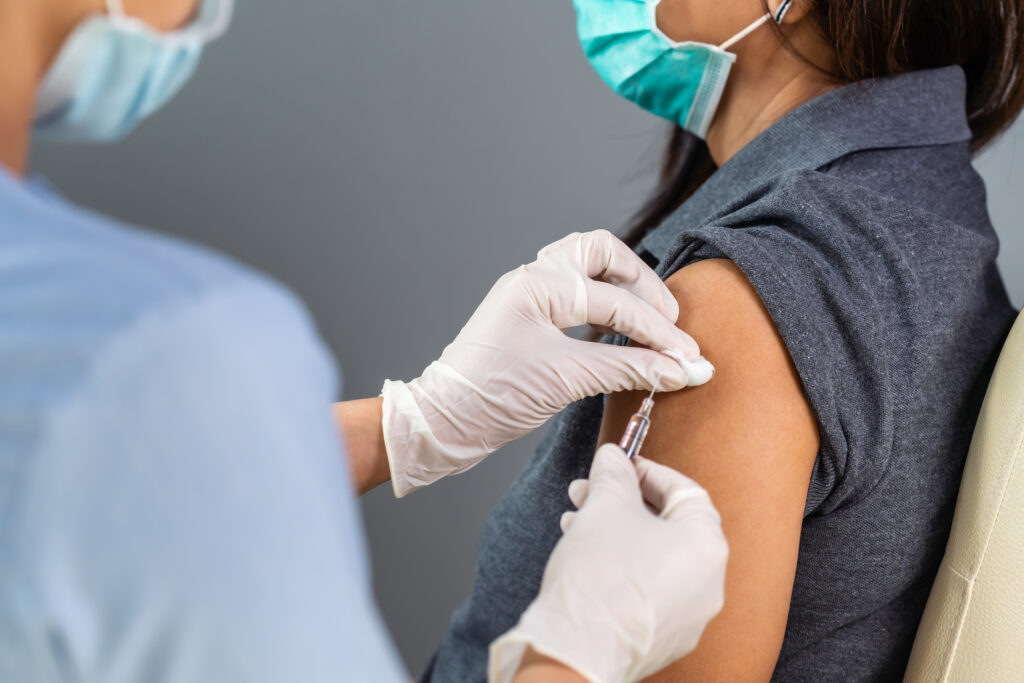Today’s (Nov. 9) news from Pfizer looks like the real deal – a safe and highly effective vaccine may be imminent. The company reported preliminary results from their candidate SARS-CoV-2 (novel coronavirus) vaccine that demonstrated over 90% virus protection. Out of 94 study participants who became infected, fewer than 9 had received the vaccine – the rest had only received saline (saltwater) placebo injections. This level of protection is much higher than the 50% level previously considered sufficient for FDA approval. It is a spectacular result. The FDA should consider an emergency use authorization (EUA), on an expedited basis the moment that two months of safety data become available.
Still, there are a few cautions to emphasize: First, the results have not been formally peer-reviewed for any issues or errors in the analysis. Next, there are no data yet on how long protection will last, or whether protection varies by risk group (e.g., by age range). Finally, there are not yet safety data covering even a full two months after injection. That being said, the only adverse effects noted so far appear to be routine and mild: some participants experienced pain and soreness at the injection site or low-grade fever. This is all very encouraging; nothing in the public data suggests hidden problems with safety or efficacy.
Anticipating that the vaccine might prove successful, Pfizer has already begun ramping up production. They should have enough doses to vaccinate 15-20 million people by the end of this year, and everyone in the US (who doesn’t refuse) by late spring.
Even better, with 90% efficacy, people who refuse the vaccine won’t be significantly endangering those who choose vaccine protection. Vaccine protection requires two doses, given three weeks apart. Infectious disease experts estimate that at least 60-70% of a population must achieve immunity (through either a vaccine or natural infection) to limit ongoing pandemic spread (i.e., achieve herd immunity). That would require up to 70-80% of those who have never been infected to accept vaccination. Given many people’s reluctance to accept vaccination, that level of vaccine uptake seems unrealistic. However, with 90% efficacy, most vaccine recipients will still be protected, even if their neighbors remain susceptible, and pandemic spread continues.
One reason that vaccine development proceeded so quickly is that it adopts a fairly novel approach: The vaccine encapsulates messenger RNA (mRNA) in microscopic lipid (fat) droplets. The mRNA harnesses the cell’s own protein production machinery to create immunity generating spike proteins. Unlike most vaccines, no active or dead virus particles are injected. The main drawback to Pfizer’s approach is that the vaccine must be stored continuously at extremely low temperatures (-94 Degrees Fahrenheit), a significant distribution challenge. Another candidate vaccine developed by Moderna uses a very similar approach. Their results should be announced soon, offering hope for similarly positive results, and potentially two effective vaccines.
Ironically, Pfizer was able to announce its results earlier than expected (i.e., this week) because of how out of control the pandemic has become: With more than 100,000 new cases per day, just in the U.S., the trial observed many more positive cases in the control arm, more quickly than expected. So, in a way, it was the ineffectiveness of national pandemic control efforts that helped to rush the vaccine’s development. Pfizer did not originally participate in Operation “Warp Speed,” the White House’s vaccine development program. Instead, it invested $2 billion of its own money in development, and then subsequently contracted with the U.S. Government for $1.95 billion to provide vaccine doses, if it proved effective.
There remain many issues to work out, including: confirming safety for a full two months, monitoring long term safety and efficacy, clarifying efficacy by risk group, ramping up production, prioritizing distribution, and overcoming logistical distribution challenges. Nevertheless, with this news we appear to be either at the end of the beginning, or possibly even at the beginning of the end of the pandemic. FDA emergency use authorization should be expedited at the earliest feasible moment. Meanwhile, we now have even more reason to redouble our pandemic control and mitigation efforts, so that we can limit the disability and death from new infections until vaccines open their much safer route to immune protection.
